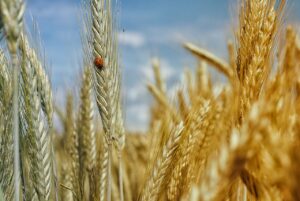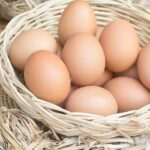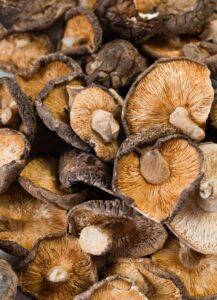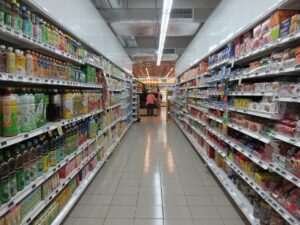Glycobiology – Glyconutrients
Glycobiology –
Essential sugars
 Our body is comprised of:
Our body is comprised of:
Molecules,
molecules form Cells,
 cells form Tissues,
cells form Tissues,
 and tissues form Organs
and tissues form Organs
60 trillion cells
For Repair – Protection – Regulation of our physiology /metabolism
Every day there are 150 to 500 billion new cells made.
All these cells must be nurtured
 and directed.
and directed.
 In 2010, the CRN (Council for
In 2010, the CRN (Council for
Responsible Nutrition) outline 3 pillars
necessary for our health:
1) Health food = Food choice (rich in nutrients)
2) Necessary supplements (our food does not have enough nutrients)
3) Regular physical exercise (varies with age)
Nutrients
Food is comprised of Carbohydrates, Proteins, Fats.
These contain Nutrients:
26 Vitamins
Enzymes
20 Amino acids
 Fatty acids
Fatty acids
72 Minerals &
Trace elements
Phytosterols
Glyconutrients
(Glyconutrients have been studied since 1975
Sugar, Glucose, Monosaccharide
Glucose = sugar (monosaccharide, 6 carbon atoms) is best known sugar.
Sugar (glucose) is necessary for calorie requirements, fuel for cells and production of energy.
 We have to have between 4.8 and 6.2 mm/L in our blood.
We have to have between 4.8 and 6.2 mm/L in our blood.
Too much is harmful for our health.
Sources of glucose:
– Sugar
– Carbohydrates
– Fructose (fruit)
Glyconutrients – Essential sugars
There are 200 sugars (monosaccharaides) in nature of which 9 are essential (indispensable) in our metabolism.
We get 2 sugars in sufficient amounts:
Glucose (sugar)
Galactose (sugars from milk)
The other “essential sugars” are:
 Fucose
Fucose
Mannose
Xylose
N-Acetyl-glucosamine
N-Acetyl-neuraminic acid
 N-Acetyl-galactosamine
N-Acetyl-galactosamine
 Arabinose
Arabinose
They are “sugars” that have another
function in our metabolism and play no role in the blood sugar.
What glyconutrients do
In 1975 science demonstrates that these “sugars” bind with proteins,
fats and other sugars: Glycosylation.
 They form Glycoforms, hairs of protein, where these “sugars”
They form Glycoforms, hairs of protein, where these “sugars”
are attached. These glycoforms are present
in every cell membrane (cell surface).
Every cell has a coating of these glycoforms, Glycocalyx
Glycocalyx, mantle of glyconutrients
The function of glycocalyx is Communication.
 You can compare the letters of the alphabet with the “sugars”
You can compare the letters of the alphabet with the “sugars”
in the coating of the cell wall.
4 icons together form letters – letter combinations form words –
words form sentences.
This is how we communicate with each other.
 Combinations of these essential sugars, when clicked together,
Combinations of these essential sugars, when clicked together,
form intra-cellular Braille. Every “sugar” has a fixed place.
 Cells communicate this way with each other: they read each other’s coding (braille).
Cells communicate this way with each other: they read each other’s coding (braille).
They send and receive messages thousands of times per second, over and over.
Cell communication – Management – Regulation – Protection
Cell to cell communication is the base from which our metabolism is controlled.
A good cell communication is the base for management, regulation and protection
of our entire metabolism (biochemistry).
After all, there must first be an assignment given (communication)
 before a process (in the metabolism) can be executed.
before a process (in the metabolism) can be executed.
Thus, these glycoforms are able
to “read” everything they come in contact to and,
through the process of communication, respond.
Healthy cells
have specific combinations of sugars, are recognized by each other and left alone.
 If recognition sites are not found on different combinations,
If recognition sites are not found on different combinations,
 they are “labeled” for excretion and thus destroyed. (e.g. bacteria or aberrant cells)
they are “labeled” for excretion and thus destroyed. (e.g. bacteria or aberrant cells)
Lack of “sugars” is the lack of pieces of “letters”.
The information transfer is then not optional
and this has consequences for the metabolism.
When 2 cells have an interaction, these sugars play a role.
Optimal cell communication results
in an optional transfer of information.
 Through this, our metabolism is able to repair and clean-up disturbed processes.
Through this, our metabolism is able to repair and clean-up disturbed processes.
Glycocalyx has a function in:
Cell communication, information exchange
Activation of physiology
Regulation of the immune system, immune modulator
Inhibition of adhesion of bacteria, viruses and parasites to the cell
Regeneration
 Clotting
Clotting
Tissue firmness
Support of digestion
Brain metabolism, memory, concentration, mood
Binding to other proteins, glycoconjugates, e.g. egg – sperm (fertilization)
Nerve conduction, neurotransmission
Wound healing, tissue repair
Hormone functioning
Detoxification
Sports Performance: endurance, better recovery after exercise, trauma.
The arrangement of the “sugars” determines what blood type we have.
Where are essential sugars
Glyconutrients are essential.
They have to be taken in through our diet.
They are in plants, fruits, vegetables, mushrooms, seaweeds and seeds.
Nowadays our diet is deficient in glyconutrients.
Of the 9 essential sugars,
only 2 are sufficiently found abundant in our diet:
Glucose (carbohydrates)
Galactose (sugars from milk)
The other “sugars”
Mannose, Fucose, Xylose,
N-Acetyl-glucosamine,
N-Acetyl-galactosamine,
N-Acetyl-neuraminic acid
and Arabinose,
are mostly insufficient in our diet.
Our diet is deficient in Nutrients
Large-scale agriculture,
Farming methods, Genetic engineering,
Multiple harvests per season,
Fertilizer, Pesticides,
Growing on high water content,
Contaminated soil, Loss of trace elements,
Contaminated groundwater/rainwater on fields,
Air pollution,
Transport, Packaging (plastic),
Conservation,
Immature harvest,
Processing,
Color/fragrances/aromas compounds.
Through these, our diet has become deficient in nutrients
and we are forced to make up for this shortage.
Essential sugars are
the building blocks from polysaccharides, glycoproteins and glycolipids.
As opposed to fatty acids and amino acids, these monosaccharide molecules
(essential sugars) are in linked to each other many ways.
There can, for example,
from 4 amino acids, 24 different combinations be made
and from 4 essential sugars, 35560 unique connections.
The large variety of shapes and numbers guarantees the recognition and transfer of information between all body cells.
Glycobiology is a young science that is being studied worldwide.
There are more than 20,000 studies carried out per year and there have been 4 Nobel Prizes given out on the topic of cell communication.
In the meantime, it has been found that glyconutrients can have a large influence
on the improvement of the sugar structures on the cell surface (glycocalyx) and in the restoration and preservation of our health.
For further information, you can contact Praktijk Progressieve-Geneeskunde (Practice Progressive Medicine).